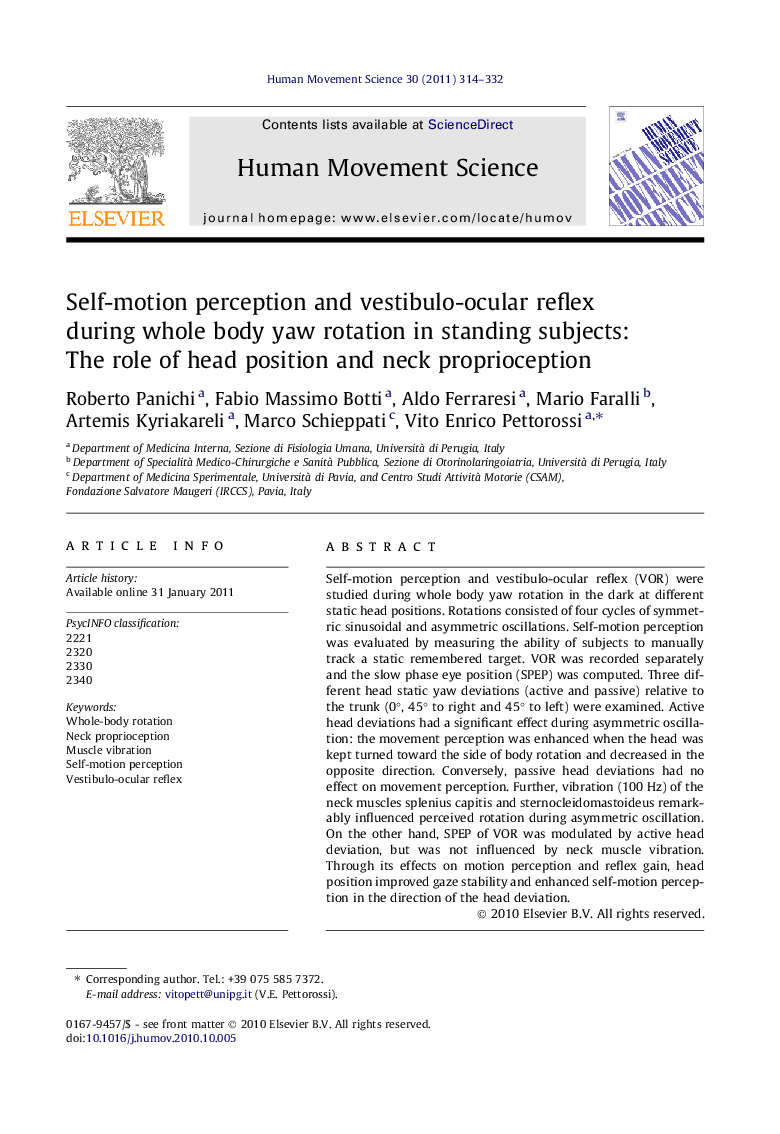| Article ID | Journal | Published Year | Pages | File Type |
|---|---|---|---|---|
| 928657 | Human Movement Science | 2011 | 19 Pages |
Self-motion perception and vestibulo-ocular reflex (VOR) were studied during whole body yaw rotation in the dark at different static head positions. Rotations consisted of four cycles of symmetric sinusoidal and asymmetric oscillations. Self-motion perception was evaluated by measuring the ability of subjects to manually track a static remembered target. VOR was recorded separately and the slow phase eye position (SPEP) was computed. Three different head static yaw deviations (active and passive) relative to the trunk (0°, 45° to right and 45° to left) were examined. Active head deviations had a significant effect during asymmetric oscillation: the movement perception was enhanced when the head was kept turned toward the side of body rotation and decreased in the opposite direction. Conversely, passive head deviations had no effect on movement perception. Further, vibration (100 Hz) of the neck muscles splenius capitis and sternocleidomastoideus remarkably influenced perceived rotation during asymmetric oscillation. On the other hand, SPEP of VOR was modulated by active head deviation, but was not influenced by neck muscle vibration. Through its effects on motion perception and reflex gain, head position improved gaze stability and enhanced self-motion perception in the direction of the head deviation.
